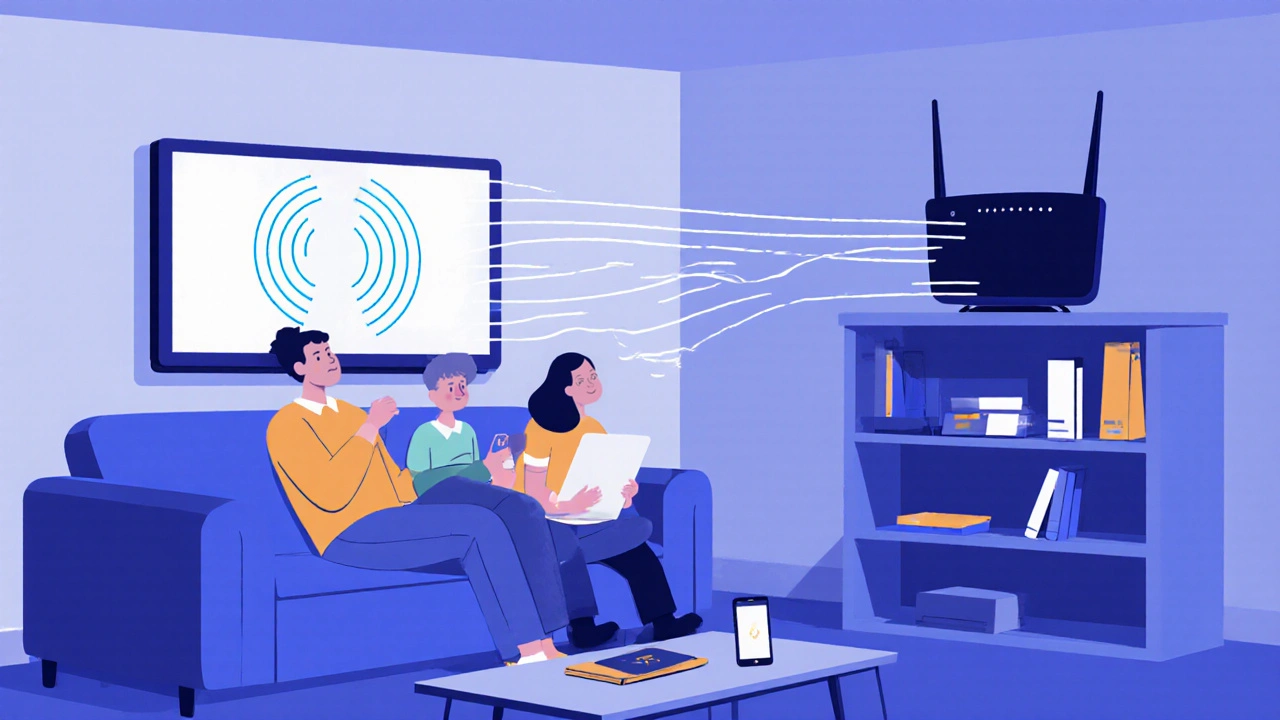Streaming Router: What It Is and How It Powers Your Home Network
When you hit play on Netflix, Disney+, or YouTube, your streaming router, a specialized home network device designed to handle high-bandwidth video traffic. Also known as a video-optimized router, it doesn’t just send data—it decides which device gets priority when your kids are on TikTok, your partner is on Zoom, and you’re watching 4K HDR. Most standard routers treat all traffic the same, which is why your stream buffers the moment someone else downloads a game or checks email. A true streaming router changes that by recognizing video traffic and giving it the fast lane.
It’s not just about speed—it’s about bandwidth management, the smart allocation of your internet capacity across devices. Top models let you assign priority to specific devices like your Roku, Apple TV, or gaming console. Some even have built-in QoS (Quality of Service) presets labeled "Streaming," "Gaming," or "Work From Home." You don’t need to be a tech expert—just pick the setting that matches your main use. And if you’ve ever had your 4K stream drop to 480p during dinner hour, that’s usually because your router couldn’t handle the load. A good streaming router prevents that by reserving enough bandwidth for video, even when other devices are active.
It also works with your Wi-Fi for streaming, the wireless network that connects your smart TV, streaming sticks, and phones to the internet. Not all Wi-Fi is built the same. Dual-band routers (2.4GHz and 5GHz) are basic. For streaming, you want tri-band or Wi-Fi 6 routers that reduce interference and handle more devices at once. Many modern streaming routers also support mesh systems, so you can extend coverage to every room without dead zones. If your living room TV buffers but your phone streams fine, the problem isn’t your app—it’s your network layout.
And let’s not forget the hidden heroes: streaming devices, the gadgets like Roku, Fire Stick, or Chromecast that connect to your TV and pull content from the internet. These devices rely entirely on the router to deliver data. A weak or outdated router can make even the fastest streaming device feel sluggish. That’s why upgrading your router often fixes issues that people blame on their subscription service or internet plan.
What you’ll find in these posts isn’t just theory. You’ll see real-world tests of routers that handle 10+ devices without breaking a sweat, guides on how to spot a router that’s holding back your 4K stream, and tips to get the most out of your current setup—even if it’s not labeled "streaming ready." Whether you’re dealing with buffering during movie night or trying to set up a whole-home streaming system, the tools and fixes here are built for people who just want their shows to play without hassle.
16
Wi-Fi 6 and Wi-Fi 7: Do You Need Newer Routers for Streaming?
Wi-Fi 6 and Wi-Fi 7 improve streaming quality and reduce buffering. Learn whether upgrading your router is worth it for 4K and 8K content, smart homes, and fast internet plans.
Latest Posts
Popular Posts
-
 Why Subtitles Aren't Working: Fix Common Video Text Issues
Why Subtitles Aren't Working: Fix Common Video Text Issues
-
 Data Management: DIT, Backups, and Archival Best Practices for Video Teams
Data Management: DIT, Backups, and Archival Best Practices for Video Teams
-
 Breakout Indies at the Box Office: How Word-of-Mouth Made These Films Blockbusters
Breakout Indies at the Box Office: How Word-of-Mouth Made These Films Blockbusters
-
 Paramount+ with Showtime vs. Peacock Premium vs. ESPN+: Which Sports Add-On Fits Your Viewing Habits?
Paramount+ with Showtime vs. Peacock Premium vs. ESPN+: Which Sports Add-On Fits Your Viewing Habits?
-
 App Layout Strategies: Organize Streaming Services by Genre and Use
App Layout Strategies: Organize Streaming Services by Genre and Use



